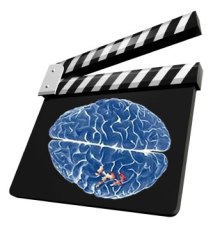 The time and effort put into making movies is no small sum. The movie Fifty Shades of Grey had a production budget of about $40 million and currently stands as the highest grossing movie of the year with a total gross of $157,463,950. When pursuing a film how do producers know when they’ve got a hit on their hands? Thus far the industry has mostly relied on experience in the business and the intuition to know what audiences will like. Besides the intuition movie producers may have had in deciding audiences would enjoy the sex scenes that constitute 14 minutes and 17 seconds of Fifty Shades of Grey’s 125 minute runtime, other empirical methods are being developed to help entice movie goers.
The time and effort put into making movies is no small sum. The movie Fifty Shades of Grey had a production budget of about $40 million and currently stands as the highest grossing movie of the year with a total gross of $157,463,950. When pursuing a film how do producers know when they’ve got a hit on their hands? Thus far the industry has mostly relied on experience in the business and the intuition to know what audiences will like. Besides the intuition movie producers may have had in deciding audiences would enjoy the sex scenes that constitute 14 minutes and 17 seconds of Fifty Shades of Grey’s 125 minute runtime, other empirical methods are being developed to help entice movie goers.
An article on livescience.com recounts a study in which college students watched 18 movie trailers while their brain wave activity was monitored with electroencephalography (EEG). After viewing the trailers the students rated how much they liked each movie. After reviewing the EEG data, it was discovered that the more beta wave brain activity there was the higher rank the participant gave the movie trailer. Beta waves are related to waking consciousness and reasoning. They also can indicate heightened states of alertness. So, it would make sense that trailers that participants felt more alert for most likely better caught their attention, leading to higher rankings.
A different study conducted in 2014 also used EEG to examine participants’ responses to movie trailers, but included blank “resting state” screens and calming nature scenes to compare the movie trailers to. Each participant experienced 7 total scenes: resting state screen, nature scene with classical music, 4 different movie trailers, and then another resting state screen. The EEG data suggested that during the movie trailer scenes participants were in significantly higher states of attention engagement. The authors concluded that this technique could aid in creating more attention grabbing movie trailers.
Another 2014 study went so far as to create a specific model for perfect movie trailers. Using a combination of analyzing the composition of past movie trailers and recording brain activity while watching them, the authors developed suggestions as to how the most ideal movie trailers are composed. Their suggestions include making trailers with varied scenes, placing the introduction to the producer after the initial general introduction when excitement for the film has already been established, placing cast and character introductions at the beginning of the storyline introduction, and placing the title and release date immediately after the climactic scene.
So, next time you go to the movies remember to choose wisely. Consider what films will truly capture your attention. Your brain will appreciate a well made film far more than one created without consideration of its audience.
References:
Box office mojo. (2015). 2015 domestic grosses. Retrieved from: http://boxofficemojo.com/yearly/chart/?yr=2015&p=.htm
IMBD. (2015, February 13). Fifty shades of grey. Retrieved from: http://www.imdb.com/title/tt2322441/
Rettner, R. (2015, March 10). Blockbuster or bust? Brain waves may predict movie success. Retrieved from: http://www.livescience.com/50092-brain-waves-movie-success.html
Wang, P., Huang, S. R., Tsai, C. W., Lu, C. F., Teng, S., Hung C. I., & Wu, Y. T. (2014). Attention drawing of movie trailers revealed by electroencephography using sample entropy. Journal of Biosciences and Medicines, 2, 6-11.
Yanagisawa, K., Iida, T., & Amasaka, K. (2014). Constructing a model for creating movie trailers increase customers’ desire. Research in Applied Economics, 6, 1948-5433.
(2012, August 6). Meet your brain waves- introducing alpha, beta, theta, delta, and gamma. Retrieved from: http://www.finerminds.com/mind-power/brain-waves/
I find this interesting as it pertains to the fact that every thing we do has a biological basis. The movie trailers we find more interesting increase our attention in our brains. However, I find that movie trailers are a lot easier to pay attention to than actual movies a lot of the time, because even if the movie isn’t that interesting, it’s not particularly difficult to stay paying attention for two minutes. So I think it would be more interesting to compare this data to data obtained from watching an entire movie, because maybe just the fact that you have to sit there for two hours will cause you to at least lose some attention, even if the movie is really good. However, I would suspect that you would still see the positive correlation between watching a good movie and higher attention engagement.
LikeLike